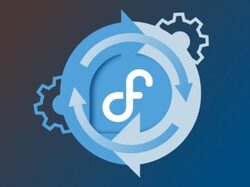today's howtos
-
How to Set up Automatic Updates on Fedora Linux
This article shows how to set up the dnf-automatic service to apply updates automatically on a Fedora Linux.
If you’re using Fedora as your operating system, keeping your system up to date with the latest software and security patches is important. One way to ensure your system stays current and secure is by setting up automatic updates. This process is simple and only takes a few easy steps.
Fortunately, Fedora provides a ready-made solution to deal with this case that can be quickly and easily implemented without much effort. Following this guide, you can easily set up automatic updates on your Fedora system and never have to worry about manually updating again. So let me show you how.
-
How to Share Fedora Desktop Screen [GNOME] Remotely
At some point, you might need to share the Fedora desktop screen (GNOME) desktop with other users for one reason or the other. There are multiple remote desktop-sharing applications that can help you achieve this.
These include TeamViewer, AnyDesk, Remmina, and many others. These are all third-party applications that require installation.
Ever heard of the ‘screen-sharing’ feature? This is a built-in tool that allows you to seamlessly share your GNOME screen.
In this guide, we will demonstrate how you can share your GNOME Desktop screen in Fedora using the ‘screen-sharing’ feature.
-
How to create a Ceph cluster on a single machine | Enable Sysadmin
Ceph storage is common in many large-scale use cases, so simpler implementations for testing or training may go unnoticed.
-
How to Install Python3 on Pop!_OS {3 Methods} - TecAdmin
Pop!_OS is a popular operating system based on Ubuntu, and like most operating systems, it comes with a default version of Python installed. However, you may want to install a newer version of Python or multiple versions of Python on your system for different purposes.
Python is a popular programming language that is widely used in many fields, including data science, web development, and scientific computing. Pop!_OS is a popular operating system based on Ubuntu, and like most operating systems, it comes with a default version of Python installed. However, you may want to install a newer version of Python or multiple versions of Python on your system for different purposes.
In this article, we will explore three methods for installing Python 3 on Pop!_OS: using the Pop!_OS package manager, using `deadsnakes` PPA, and building Python from the source.
-
How To Install Nomacs on Fedora 37 - idroot
In this tutorial, we will show you how to install Nomacs on Fedora 37. For those of you who didn’t know, Nomacs is a versatile and easy-to-use image viewer that is well-suited for a wide range of image viewing and editing tasks, and it is open-source software that is actively developed and supported by a large community of users and developers. It is designed to be lightweight and easy to use, and it supports a wide range of image formats, including BMP, JPEG, PNG, and TIFF
This article assumes you have at least basic knowledge of Linux, know how to use the shell, and most importantly, you host your site on your own VPS. The installation is quite simple and assumes you are running in the root account, if not you may need to add ‘sudo‘ to the commands to get root privileges. I will show you the step-by-step installation of the Nomacs image viewer on a Fedora 37.
-
How to List RPM Package Dependencies with DNF - LinuxCapable
Installing applications on Linux derivatives such as CentOS, Rocky Linux, and RHEL may require investigating the dependencies needed for the RPM packages you are installing with the DNF Package manager. Knowing what files and processes will be affected during an installation can help in certain situations, mainly around troubleshooting.
-
How To Install Rudder on Ubuntu 20.04 | 22.04 LTS - Unix / Linux the admins Tutorials
Rudder is an open source audit and configuration management utility to help automate system configuration across large IT infrastructures. Rudder relies on a lightweight local agent installed on each managed machine.
In this guide, you will show you how to install Rudder on Ubuntu systems.
-
How To Install QMPlay2 on Ubuntu 20.04 | 22.04 LTS - Unix / Linux the admins Tutorials
QMPlay2 is a video and audio player. It can play all formats supported by FFmpeg, libmodplug (including J2B and SFX). It also supports Audio CD, raw files, Rayman 2 music and chiptunes. It contains YouTube and MyFreeMP3 browser.
In this guide, we will show you how to install QMPlay2 on Ubuntu systems.
-
Linux Cat Command Examples
In Linux, the “cat” is the concatenation of files which combines multiple files into a single file. There are other several uses of the cat command in Linux which we will talk in this article to give you an understanding of how it works in different scenarios.

